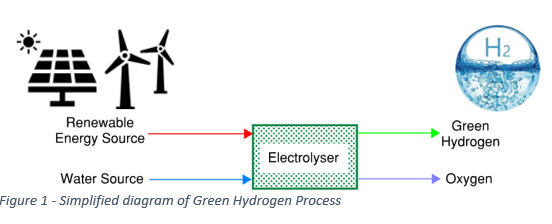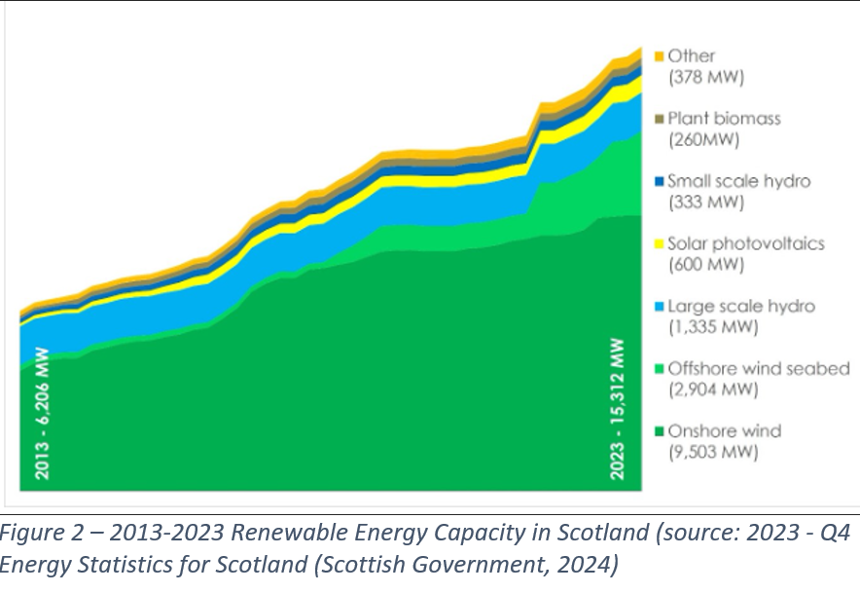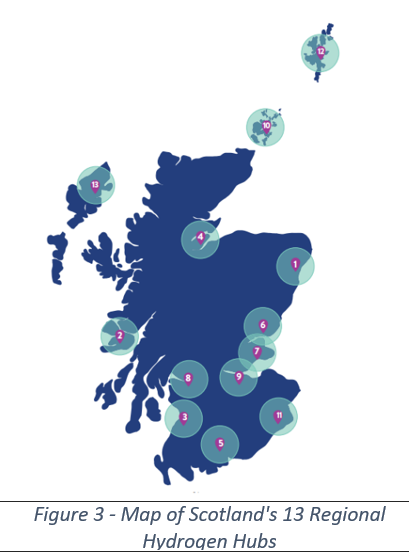
17 Jul 2024
10 minutes to read
From igniting the fire that became the 17th century industrial revolution with James Watt’s revolutionary steam engine, to becoming the largest producer of oil, and second largest producer of gas in Europe (NatureScot, 2023), Scotland has always boasted a proud heritage around energy production and groundbreaking engineering.
Given our common climate concerns, and the need for Carbon neutral energy forms, this ancient land is finding herself once again in a prime position to become one of the top producers of a main component of the energy transition, i.e. green Hydrogen.
For the past few years, green H2 has been a hot topic of conversation in the energy industry as an energy vector and storage media for delivering global net zero Carbon targets, particularly in regard to hard-to -electrify sectors such as heavy industry, shipping, and aviation. Hydrogen itself is not a new fuel source and vast quantities of it (referred to as grey Hydrogen) are produced on an industrial scale using natural gas or methane via a steam methane reformation process. This, however, releases Carbon Dioxide (a greenhouse gas) as a by-product to the atmosphere.
Other ‘colours’ of Hydrogen refer to the type of technology or processes used to derive it. Green H2 is obtained from using renewable energy sources, such as wind power, and water, as part of an electrochemical process called ‘Electrolysis’ that splits water into Hydrogen and Oxygen. Unlike steam methane reforming, this process produces no CO2.

Green Hydrogen therefore lends itself to countries with a well-established renewable energy portfolio, particularly if instances of surplus renewable production exist (for which for instance wind turbines are curtailed). Scottish renewable growth has been increasing substantially over the last 10 years, and latest figures from the Scottish Government show its total renewable capacity to be at 15.3GW. In 2023, both fixed offshore and onshore wind had the largest capacity growth, at 818MW and 510MW respectively. Figure 1, shows renewables growth across different technologies.

With further plans for an estimated additional 25.9GW of renewable capacity spanning 517 projects in the pipeline, Scotland has a clear competitive advantage for gearing up to produce Green H2 from its growing renewables portfolio.
The Scottish Government have already taken steps to develop a clear and ambitious H2 strategy. The 2022 Hydrogen Action Plan sets out its vision, targets, and roadmap for the sector, as well as the roles and responsibilities of different stakeholders. Alongside this, there is also a Hydrogen Sector Export Plan under development and due for public release in 2024 which will outline how the Scottish Government intends to use its trade and investment levers to support the development of the Hydrogen Sector in Scotland in a way that is ready to respond to growing international demand. (Scottish Government, 2022).
Alongside the extensive portfolio of renewables, Scotland has additional strengths to realise a leading role in Green Hydrogen production and export. It has existing infrastructure and expertise that can be leveraged for green hydrogen development. For example, Scotland has a well-developed gas network that can be adapted to transport and distribute Hydrogen. It also has a strong oil and gas sector that can provide skills and innovation for the transition to Hydrogen. It has several research and innovation centres that support research into Hydrogen, namely the Hydrogen Accelerator, the Net Zero Technology Centre (NZTC) and the Energy Technology Partnership (ETP) (Scottish Development International, 2023). Figure 3 shows a map of the 13 proposed Regional Hydrogen Hubs that Scotland is supporting, taken from the Scottish Development International Website.

As is the case with the birth of any new sector, Scotland also faces some challenges and barriers to realise a green H2 dream. Scotland needs to overcome the high costs and technical risks associated with green H2 production (often seen as a barrier for potential H2 energy off takers). It also needs to address the social and environmental impacts of green H2, such as public acceptance, safety, and sustainability of the technology. As the UK government’s experience showed, public acceptance can often defeat Whitehall policies. A Hydrogen heating trial in Ellesmere Port was abandoned after large protests within the community.
Despite the potential challenges, I am of the opinion that Scotland has one of the most well-established Hydrogen policies of the UK nations, and potentially within Europe. It can become a global leader in Hydrogen, and as a fellow Scot, I look forward to seeing how the future of the Hydrogen economy unfolds in Scotland.
Bibliography
NatureScot. (2023). Oil and Gas. Retrieved from Nature Scot: https://www.nature.scot/professional-advice/land-and-sea-management/managing-coasts-and-seas/oil-and-gas
Scottish Development International. (2023). Energy Transition Industries: Hydrogen. Retrieved from Scottish Development International: https://www.sdi.co.uk/business-in-scotland/find-your-industry/energy-transition-industries/hydrogen
Scottish Government. (2022). Hydrogen Action Plan. Edinburgh: Scottish Government.
Scottish Government. (2024). Energy Statistics for Scotland - Q4 2023. gov.scot.
Latest Insights
View all insights







